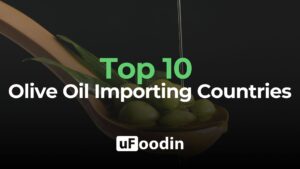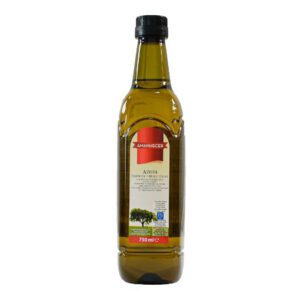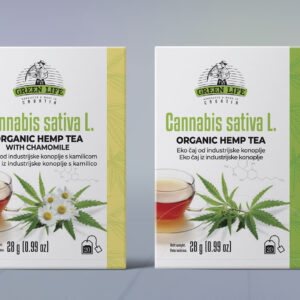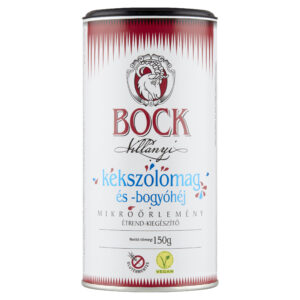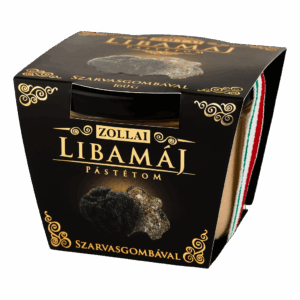
Top 10 Spice Brands
The global spice market is experiencing robust growth, driven by increasing consumer interest in diverse cuisines, health benefits associated with spices, and a rising demand for natural flavor enhancers. In 2023, the market was valued at approximately $28.25 billion and is projected to reach $53.34 billion by 2034, exhibiting a Compound Annual Growth Rate (CAGR) of 6% during the forecast period. This growth is fueled by the globalization of food cultures, which has led to heightened interest in exotic and ethnic cuisines, and the integration of spices like turmeric, cumin, and cardamom into daily cooking routines.
Spices are also recognized for their health benefits, such as anti-inflammatory and antioxidant properties, further driving their demand. For example, turmeric, containing curcumin, has gained significant popularity among health-conscious consumers.
Asia-Pacific dominates the spice market, accounting for a significant share of global production and consumption. Countries like India, Vietnam, and China are major producers, with India being the largest exporter of spices worldwide. Meanwhile, North America and Europe are experiencing growing demand for organic and specialty spices, driven by health-conscious consumers and the rising popularity of international cuisines. The U.S. spice market alone is projected to reach $6.91 billion by 2032, reflecting this trend.
The market is further segmented by types of spices, including pepper, ginger, cinnamon, cumin, turmeric, cardamom, coriander, and cloves. Pepper holds a substantial market share due to its widespread use, while turmeric is expected to register the fastest CAGR of 7.1% through 2030, attributed to its health benefits and versatile applications.
Spices are available in various forms, such as whole, powdered, and crushed, with powdered spices dominating due to their convenience and ease of use in culinary applications.
The future of the spice industry lies in its ability to meet evolving consumer demands for clean-label, natural, and sustainably sourced products while embracing global flavor trends and technological advancements. This dynamic sector continues to play a critical role in shaping global cuisines and food innovation.

1. McCormick & Company
- Headquarters: Hunt Valley, Maryland, USA
- Why It Stands Out: McCormick is a global leader in spices, herbs, and seasonings, offering a diverse portfolio of products for both retail and food service.
- Key Innovations: Development of organic and non-GMO spice blends, along with investments in AI-driven flavor creation.
2. Fuchs North America
- Headquarters: Hampstead, Maryland, USA
- Why It Stands Out: Fuchs specializes in custom spice blends tailored for the food industry, including snacks, sauces, and bakery products.
- Key Innovations: Creation of clean-label spice solutions with a focus on reduced sodium and allergen-free blends.
3. Badia Spices
- Headquarters: Doral, Florida, USA
- Why It Stands Out: Known for affordability and wide distribution, Badia Spices offers a vast range of high-quality spices to global markets.
- Key Innovations: Expansion into organic and gluten-free spice lines.
4. Everest Spices
- Headquarters: Mumbai, India
- Why It Stands Out: Everest dominates the Indian spice market with a strong focus on purity and traditional flavors, catering to both domestic and international audiences.
- Key Innovations: Introduction of export-quality blends designed for global Indian cuisine enthusiasts.
5. MDH (Mahashian Di Hatti)
- Headquarters: Delhi, India
- Why It Stands Out: MDH is a household name in India, offering a wide range of spices and blends that capture authentic Indian flavors.
- Key Innovations: Focus on ready-to-cook spice mixes for modern consumers.
6. Frontier Co-op
- Headquarters: Norway, Iowa, USA
- Why It Stands Out: Frontier Co-op emphasizes sustainability, offering organic and fair-trade spices while supporting small farmers globally.
- Key Innovations: Launch of premium spice blends with a commitment to ethical sourcing and environmentally friendly packaging.
7. Spices Board India
- Headquarters: Kochi, Kerala, India
- Why It Stands Out: As a government organization, Spices Board India ensures quality and promotes Indian spices globally through certifications and exports.
- Key Innovations: Development of traceability systems for improved transparency in spice sourcing.
8. Simply Organic
- Headquarters: Norway, Iowa, USA
- Why It Stands Out: Simply Organic is renowned for its certified organic spices, appealing to health-conscious and environmentally aware consumers.
- Key Innovations: Introduction of unique, globally inspired spice blends for culinary enthusiasts.
9. SABATER Spices
- Headquarters: Murcia, Spain
- Why It Stands Out: SABATER focuses on the production and distribution of high-quality paprika, saffron, and other Mediterranean spices.
- Key Innovations: Advanced drying and grinding techniques to preserve flavor and aroma.
10. Bart Ingredients
- Headquarters: Bristol, UK
- Why It Stands Out: Bart Ingredients specializes in premium spices and blends, catering to both retail and gourmet markets.
- Key Innovations: Development of spice-infused oils and innovative packaging solutions for extended shelf life.
Major Trends in the Spice Industry
1. Rising Demand for Organic and Clean-Label Spices
Consumers are increasingly favoring organic spices free from artificial additives, pesticides, and GMOs. Clean-label products are becoming the gold standard, with demand for transparency driving companies to provide detailed sourcing and processing information.
2. Growth in Functional and Health-Oriented Spices
Spices like turmeric, ginger, and cinnamon are gaining popularity for their medicinal properties, including anti-inflammatory, antioxidant, and immunity-boosting effects. As wellness trends grow globally, functional spices are being integrated into supplements, teas, and fortified foods.
3. Popularity of Global and Regional Flavors
Globalization and cultural exchange have heightened interest in international cuisines, boosting demand for regional spice blends like harissa from North Africa, za’atar from the Middle East, and garam masala from South Asia. This trend has led brands to innovate with culturally authentic spice mixes.
4. Sustainability and Ethical Sourcing
Sustainability is no longer optional in the spice industry. Companies are prioritizing fair trade practices, reducing their carbon footprints, and implementing sustainable farming practices. Ethical sourcing initiatives are particularly critical for spices like vanilla, cinnamon, and saffron, which are prone to exploitation in production.
5. Advances in Spice Processing and Preservation
Technological innovations, such as steam sterilization and cryogenic grinding, are improving the quality and safety of spices while preserving their natural aroma and flavor. These advancements also extend shelf life and reduce contamination risks.
6. Expansion of E-Commerce and Direct-to-Consumer Channels
E-commerce platforms have revolutionized spice sales, providing access to niche and specialty spices for a global audience. The convenience of online shopping, combined with targeted digital marketing, has boosted sales of premium and exotic spices.

Main Challenges in the Spice Industry
1. Price Volatility and Supply Chain Disruptions
The spice industry is heavily reliant on agricultural outputs, making it vulnerable to fluctuations in raw material prices caused by weather events, geopolitical instability, and transportation issues. For example, the price of vanilla and saffron can spike dramatically due to limited supply.
2. Adulteration and Quality Control
Ensuring the purity and authenticity of spices is a persistent challenge. Adulteration, whether intentional or accidental, undermines consumer trust and poses health risks. Companies are investing in traceability technologies and quality assurance systems to address this issue.
3. Stringent Regulatory Requirements
Compliance with diverse food safety and labeling regulations across regions adds complexity to the production and export of spices. Certifications like organic, non-GMO, and fair trade also come with their own stringent criteria.
4. Overharvesting and Environmental Impact
Unsustainable farming practices threaten the long-term availability of key spices like saffron, cardamom, and cinnamon. Deforestation, soil degradation, and loss of biodiversity are pressing concerns that the industry must address through conservation efforts.
5. Intense Competition from Local and Global Players
Local spice brands often dominate their regions due to familiarity and affordability, making it challenging for global brands to penetrate these markets. Conversely, global players leverage economies of scale, putting pressure on smaller companies to innovate or differentiate.
6. Educating Consumers About Spice Usage
While there is growing interest in spices, many consumers lack knowledge about how to use them effectively in cooking or for health purposes. Brands face the challenge of educating consumers through recipes, tutorials, and marketing campaigns to drive adoption.
The Top 10 Spice Brands exemplify the remarkable evolution of the spice industry, blending tradition with innovation to meet the demands of modern consumers. From McCormick’s global leadership to Everest’s deep cultural roots, these companies are redefining how spices are produced, marketed, and consumed. By prioritizing authenticity, sustainability, and consumer education, they have created a thriving market that caters to diverse tastes, health goals, and environmental concerns.
As the industry continues to grow, it is becoming a cornerstone of the global food ecosystem, supporting millions of livelihoods and connecting cultures through flavor. However, challenges like price volatility, adulteration, and environmental pressures require proactive solutions. Investments in advanced technologies, ethical sourcing practices, and collaborative supply chain strategies will be crucial for overcoming these obstacles.
Platforms like uFoodin are instrumental in bridging gaps between producers, distributors, and retailers. By facilitating access to global markets and fostering partnerships, uFoodin helps spice brands expand their reach, showcase their innovations, and respond dynamically to evolving trends. The platform also creates opportunities for smaller, artisanal brands to compete on a larger scale, ensuring diversity and inclusivity within the industry.
As global culinary preferences continue to evolve, the spice industry stands at the intersection of tradition and modernity. With its ability to adapt to consumer needs and environmental imperatives, the future of spices is not only flavorful but also sustainable and inclusive. Companies that lead with purpose and innovation will not just succeed but set the tone for how the world experiences and appreciates spices in the decades to come.
uFoodin Editorial Team
Bibliography
- Statista: Global Spice Market Overview
- Fortune Business Insights: Spice Market Trends and Forecast
- IMARC Group: Analysis of Global Spice Industry
- Grand View Research: Market Dynamics in Spices and Seasonings
- Precedence Research: Growth Opportunities in the Global Spice Market
- Allied Market Research: Sustainability Trends in the Spice Industry

